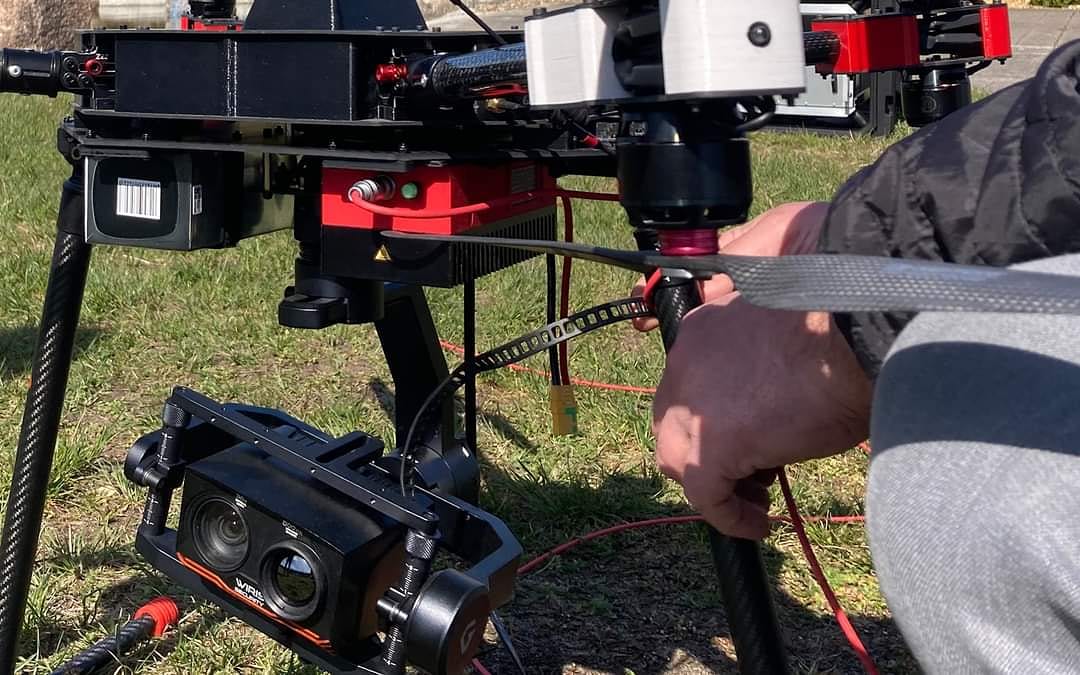The works, which will contribute to the INIA Potato Genetic Improvement Program, will be carried out by the INIA Remehue researcher, Ana María Méndez.
The Agricultural Research Institute (INIA) will implement the use of drones and thermal cameras, among other available technologies, to help select and generate new high-yielding potato varieties that are better adapted to climate change. This was reported by the INIA Remehue researcher, Ana María Méndez, who was recently awarded a Fondecyt Research Initiation 2022 project.

“The awarded project called: Precision phenotyping in potato genotypes for the identification of traits associated with tuber yield, has as its main objective to identify and quantify the morphophysiological traits associated with the yield of tubers in high yield potato genotypes under different conditions. edaphoclimatic and water availability. Of course, the results obtained will be passed on to farmers with the new varieties that are released by INIA, as relevant information in decision-making for potato cultivation,” said the professional.
He explained that “the study of crop phenology refers to the entire process of plant development, which helps to understand the adaptation of varieties or genotypes to different edaphoclimatic conditions, abiotic stresses, such as water deficit and temperature, among others”.
Dr. Méndez added that “the time and duration of the different phenological phases depends on the genotype and the growth conditions such as the environment and agronomic management. When we talk about phenology we cannot leave physiology out, hence when we join these two branches we have the phenotyping of plants”.
He also clarified that “in potato cultivation, the main stages in the development of the crop begin with the beginning of sprouting from the seed tuber, then comes the emergence, elongation of the stolons, beginning of tuberization, flowering and physiological maturity. Unlike other crops, in this one we are interested in the tubers that grow underground, therefore, its study becomes a little more complex. However, we can correlate the development of the aerial part with what happens below the ground. For this, the use of images is a tool that allows a study of the development of plants over time.
The INIA researcher pointed out that “this technology will be used in the INIA Potato Genetic Improvement Program, providing physiological information and phenotypic characterization, which will help to select varieties better adapted to changing growth conditions, due to the effect of climate change”.
- More than 70% of the total area planted with potatoes in Chile is concentrated in the Bío Bío and Los Lagos regions. As for yields, they are higher in the southern zone of Chile, where the highest percentage of area planted with potatoes is concentrated.
- The Lakes region leads with 33.2 ton/ha of regional average yield. In all regions (with the exception of Metropolitana and O’higgins), the yield is higher than that registered in the previous season. This is the product of a recovery in yields as a result of more favorable climatic situations for the development of the crop.
- It is a parasitic disease that affects the tuber and that is currently limited to the region of La Araucania and the towns in Los Rios, such as San Jose de la Mariquina and Lanco. Since the virus spreads easily, producers fear it will reach the region of Los Lagos. The situation is being discussed at a seminar in the Institute of Agricultural Research, Inia Remehue, stated Luis Miquel, general manager of the Chile’s Potato Consortium.
- He said that people were concerned about this disease because it was different from other well-known diseases, such as the golden nematode. Unlike other diseases, the propagation of the bacterial wilt involves water streams so researchers should focus and increase their studies on this, he said.This was part of the contents analyzed at the seminar “Potato plant health problems: how to face the risk with knowledge”, which featured exhibitors from Chile and from the United States; and which was held weeks before the start of the harvest.

